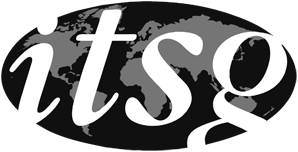Corporate Tax Guide: Chile

Members:
- José Santiago Montt Vicuña (Montt y Cía S.a.)
- Omar Morales Carrasco (Montt y Cía S.a.)
|
1. Country
The information is valid for the entire country except where indicated. For example, in the case of Malaysia, Labuan is part of Malaysia but has a special tax regime, so this is noted. |
Chile – entire country. | ||||||||||||||||||||||||||||||||
|
The corporate tax rate shown is the typical corporate tax rate that a domestic corporation owned by non-resident persons would pay. The tax rate does not include withholding tax on dividends, but does include a distribution tax shown separately if applicable. Certain countries have a low corporate tax rate, but charge an additional tax when a dividend is distributed. Because this tax is paid by the corporation, and not deducted from the amount of the dividend itself, it is not a dividend withholding tax. As a result, it typically cannot be reduced by an international tax treaty. |
25% or 27%, varies depending on the tax regime chosen by (or applicable to) the taxpayer. | ||||||||||||||||||||||||||||||||
|
The basis of taxation for a corporation will typically be one of:
|
World income. | ||||||||||||||||||||||||||||||||
|
Where non-resident corporation carries on business in a country, business profits may be subject to corporate tax. In addition, a branch profits tax may apply in lieu of dividend withholding tax. This branch profits tax applies to the after tax profits, typically at a fixed percentage. An international tax treaty may reduce the rate of branch profits tax, typically to the rate provided for dividend withholding. |
Yes. 17.45%, which is reduced to 8% if a Treaty is involved. | ||||||||||||||||||||||||||||||||
|
The common forms of business entity are noted. In addition, the entities which are flow through entities for U.S. tax purposes are indicated. |
Stock Corporation (S.A. ), Stock Partnership (SpA), Limited Liability Company, Unlimited Liability Company, branches and permanent establishments. | ||||||||||||||||||||||||||||||||
|
Capital gains may be fully taxed, partially taxed or not at all. In certain countries, an exemption, called the participation exemption, will apply to exempt from tax a capital gain from disposition of a substantial holding of shares of a subsidiary. Where a participation exemption is applicable, it is noted together with a summary of the main conditions. |
Taxed with a 35% withholding. No participation type exemption. It may be reduced in some cases to 16% or 15% by Treaty. | ||||||||||||||||||||||||||||||||
|
Certain countries allow group taxation, otherwise known as consolidated tax filing. Here the tax returns of a group of corporations in the country may be combined together, which can be useful. If group taxation is permitted, it is noted along with the main conditions. |
Not permitted. | ||||||||||||||||||||||||||||||||
|
Countries offer various kinds of special exemptions and incentives. Examples are a reduced tax rate, a tax holiday, a tax credit on the purchase of equipment, special accelerated deductions for deprecation, incentives for R&D, and various others. Here the major items are noted. |
| ||||||||||||||||||||||||||||||||
|
Many countries have thin capitalization rules which limit or deny the deduction of interest expense in certain circumstances. For example, if debt exceeds three times equity, a proportionate amount of interest expense may not be deductible. Limitations take various forms, restricting the interest expense deduction to a percentage of profit, deeming the debt to be equity and the interest to be a payment of dividends, and various other rules which may blend of these principles. Where a country has thin capitalization rules, they are briefly described. |
Yes. When the total leverage of the company exceeds three times its equity (determined on a yearly basis), the interest paid in excess to related parties is subject to a 35% tax. The tax that actually has been withheld, though from the interest paid to related parties, may be deducted from the 35% tax applied as a consequence of the thin cap. Normally, interest payments are subject to a 35% withholding tax in Chile. Therefore, the thin cap rule is relevant only in the two following cases: (i) Loans with related parties who are banks or financial institutions, as in these cases the normal withholding tax rate is 4%; or (ii) Loans with related parties resident in Treaty countries, as in these cases the reduced rate contemplated in the Treaty is applicable (normally between 5% and 15%). In all cases, the interest always remains tax-deductible as an expense. | ||||||||||||||||||||||||||||||||
|
Many countries have transfer pricing rules. They very often follow the OECD guidelines and the arms length principle. Some countries have specific rules which apply in certain cases. In addition, some countries allow for a selection of the most appropriate transfer pricing methodology in the circumstances, while other countries follow a hierarchy of methods, with the CUP method (comparable uncontrolled price) often ranking first. The transfer pricing rules are briefly explained. |
Yes. OECD Guidelines. 35% penalty on transfer pricing adjustments. Transfer pricing studies are not mandatory, even though it is convenient to have them. | ||||||||||||||||||||||||||||||||
|
11. CFC Rules
Many countries tax passive income earned in controlled foreign corporations (CFC’s) on an imputation basis while active income is not taxed. Such CFC rules are usually complex and vary significantly in what is considered passive income, and how foreign tax paid is taken into account. Some countries approach CFC rules on the basis of whether or not the foreign corporation is resident in a low tax jurisdiction or a tax haven. This may be done through a black list of countries. The general overview of CFC rules is described in simple terms. |
Yes. Applies to controlled foreign entities of whatever nature (foreign corporations, companies, trusts, investment funds, etc.). It is applied in connection with passive income, which must be declared and taxed in Chile on an accrual yearly basis. The passive income subject to tax in Chile must be determined applying the domestic rules for determination of the net taxable income of companies domiciled in Chile. It is presumed, unless proven otherwise, that all the income produced by an entity located in a low-tax jurisdiction (as defined in the law) is passive. CFC rules are not applicable when the annual passive income produced by the respective controlled-foreign entity does not exceed UF2.400 (approximately US$100,000). | ||||||||||||||||||||||||||||||||
|
Profits repatriated by way of dividends from a subsidiary to a parent company are typically taxed in one of three ways:
|
As from year 2017, there are two new alternative income tax regimes in force in Chile: (i) a deferred-tax regime, according to which dividend is subject to a 17.45% withholding tax at the time of remittance (corporate tax of 27% on an accrual basis, so overall taxation on the profit is 44.45% after the dividend payment); and (ii) a pass-through tax regime, according to which a 35% tax is levied on the annual profit on an accrual basis (regardless of whether the profit has been paid as a dividend or not), 25% levied on the company as a corporate tax and 10% on the shareholders. Under this second regime, no withholding tax is levied on the dividend actually paid to the shareholders, as total taxation is applied on an accrual basis each year. Under the deferred-tax regime, the withholding tax on the dividend is reduced to 8% when there is a Treaty in place (27% corporate tax on an accrual basis, so overall taxation on the profit is 35% after the dividend payment). | ||||||||||||||||||||||||||||||||
|
Most countries allow a foreign tax credit based on a formula, typically net foreign income over the net income times taxes payable. This limits the foreign tax credit to roughly the domestic tax otherwise applicable to the foreign income. There are numerous variations and technical rules in the details of foreign tax credit calculations. Where a foreign tax credit is allowed, the general principles are described. |
Yes, there are three situations:
| ||||||||||||||||||||||||||||||||
|
14. Losses
Losses typically can be carried forwards for a period of years, and sometimes can be carried back. Losses may be segregated into capital losses and non capital losses. |
Losses may be carried forward without time limit. There will be restrictions on a change of control if the business purpose of the company also is changed. Losses may be offset only against future profit or dividend received from third parties, but not against accumulated profit. | ||||||||||||||||||||||||||||||||
|
It is not practical to list all of the tax treaties which a country has in a simple guide like this. Accordingly, a link is provided in each case to the tax treaties. Some countries have entered into Tax Information Exchange Agreements (TIEA). Treaties are more and more containing provisions that limit benefits (LOB provisions). |
Yes.
| ||||||||||||||||||||||||||||||||
|
Withholding tax rates vary considerably from treaty to treaty, and countries may have domestic exemptions applicable in certain circumstances (for example copyright royalties, interest paid to arm’s length persons, etc.). A table shows the typical rates but cannot adequately summarize all of the details. The applicable treaty should be consulted. |
| ||||||||||||||||||||||||||||||||
|
17. Taxation Year
Some countries allow for the selection of year-end while other countries specify a particular year-end which all business entities must have. Normally the taxation year cannot exceed 12 months. Where it can exceed 12 months, this is noted. |
Calendar year. It begins on 1 January, and finishes on 31 December. | ||||||||||||||||||||||||||||||||
|
This is the due date for filing a tax return. Where extensions are available, this is noted. |
Due on 30 April each year, in respect of the former year. | ||||||||||||||||||||||||||||||||
|
19. Tax Instalments
The typical tax instalment requirements are noted. |
Yes, advanced partial payments of the annual corporate tax must be made on a monthly basis, pursuant to a formula provided by the tax authority. | ||||||||||||||||||||||||||||||||
|
20. Payment of Tax
This is the date when the corporate tax owing for the year must be paid. It may be different from the tax return filing due date. |
Due before the end of the month during which the tax statement has been filed, and in any case not later than 30 April. | ||||||||||||||||||||||||||||||||
|
This is the period after which the tax department cannot in normal circumstances reassess a taxation year. It is sometimes referenced to the end of the taxation year and sometimes to the date of the first assessment of that taxation year. |
| ||||||||||||||||||||||||||||||||
|
If a country has exchange controls, this is noted, together with the main requirements. |
No. | ||||||||||||||||||||||||||||||||
|
23. VAT
A VAT tax system typically provides that the supply of goods and services is classified as taxable, tax exempt, or zero rated. Where a business is engaged in an activity which is taxable, it must charge VAT on its revenue, and can claim a refund of VAT on its expenditures. Where the activity is exempt, it does not charge VAT on its revenue, and cannot claim back VAT paid. Where the entity is engaged in activities which are zero rated (typically agriculture, food services and exports), then it can claim back VAT which it has paid on its expenditures, and does not charge VAT on its revenue. If a country has a typical VAT system, this is noted. If a country has no VAT system but a sales tax system, this is indicated. Some countries may have a mixture, and taxes may apply at different levels (federal and state for example). |
Yes. 19%. It is levied on the sale of both movable goods and real estate properties, when the transaction is conducted as part of the ordinary course of business of the taxpayer. Services other than those stemming from industrial and commercial activities are not subject to VAT. For instance, advisory and technical assistance services are generally not subject to VAT. | ||||||||||||||||||||||||||||||||
|
Stamp duty, or land transfer tax, can apply on such things as the transfer of shares, land, or the issuance of bonds or debentures. This is described together with the applicable rates. |
There is a Stamp Tax only on loans, levied at a rate of 0.066% per each month or portion of a month elapsed between the date the loan is granted and its maturity, with a cap of 0.8%. | ||||||||||||||||||||||||||||||||
|
25. Capital Tax
If capital tax is payable, this is described. Capital tax may apply in specialized industries, such as banking and insurance, even if a country does not generally apply a capital tax to corporations. |
At the municipal level there is a tax calculated on the capital of the company, whose rate is determined by the respective Municipality within a range from 0.25% to 0.5% (in most cases it is 0.5%), and it must be paid on an annual basis (normally in two installments), with a limit of UTM4.000 (approximately US$287,000). | ||||||||||||||||||||||||||||||||
|
26. Other Taxes
Where significant, other taxes are noted. |
Employment tax, tax on fees paid to independent contractors, inheritance tax, real estate tax. | ||||||||||||||||||||||||||||||||
|
Anti-Avoidance Rules take many forms, the most common ones are a general anti-avoidance rule, treaty shopping limitations, the requirement for economic substance (or a business purpose in carrying out transaction) and specific anti-avoidance rules for particular purposes. A very brief overview of the anti-avoidance rules is described. |
Yes. GAAR is in force as from 30 September 2015. Threshold is abusive tax avoidance. The text of the rule is not clear at all and has not been applied by the authority yet. Application of GAAR cannot be decided by the tax authority on its own, but must be resolved by the Tax Courts as a consequence of a judicial procedure. Treaty Shopping: No express rules. Economic Substance: No concept of this. Other: Numerous specific anti-avoidance rules and limitations. | ||||||||||||||||||||||||||||||||
|
Where a non-resident person holds shares of a corporation established in the country listed, the capital gain which results may be taxable or not taxable depending on the circumstances and, possibly, the existences of an international tax treaty. The general rules are noted. |
The capital gain arising from the sale of shares by a non-resident is subject to a 35% withholding tax. Some Treaties reduce taxation to 16% or 15% when the seller owns less than 20% of the company being sold. | ||||||||||||||||||||||||||||||||
|
Where a corporation is acquired through the purchase of shares, sometimes a step up is allowed so that the cost of its assets can be revalued. The main rules are briefly summarized. |
No. The value of assets is corrected only by the inflationary index available in Chile. | ||||||||||||||||||||||||||||||||
|
30. Use of Rulings
In some countries, rulings are commonly used (and sometimes even required). In other countries the system is either unavailable or not commonly used except in special circumstances. |
Rulings not required. Only used in special situations. | ||||||||||||||||||||||||||||||||
|
31. Other
Other important aspects of the tax system are noted. |
N/A | ||||||||||||||||||||||||||||||||

 Login
Login

















































